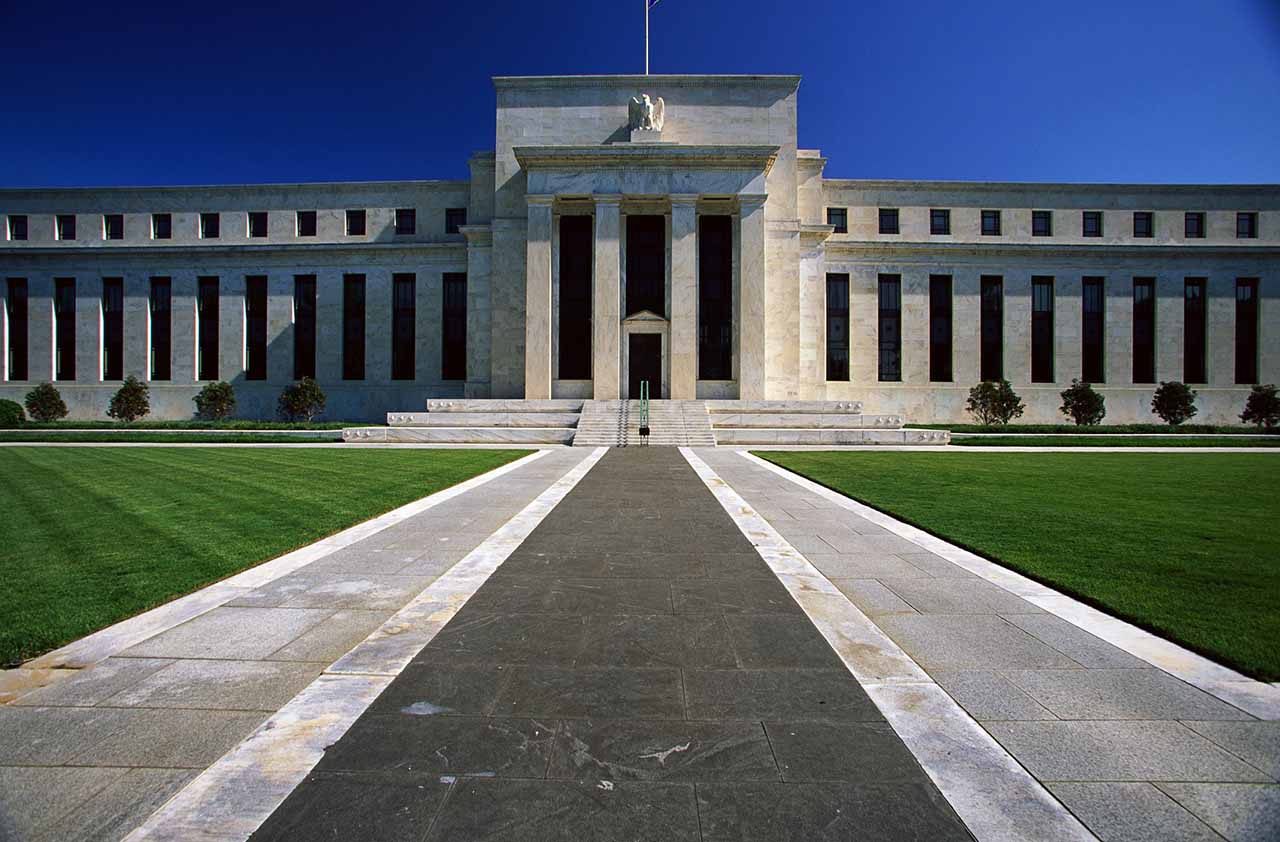The Fed Is Buying ETFs. Now What?
The Federal Reserve's plan to hoover up $750 billion in bond funds could have some serious long-term consquences.


It's official. The Federal Reserve is now buying bond exchange-traded funds (ETFs).
Specifically, as part of the stimulus effort to counteract the effects of the coronavirus lockdowns, the Treasury gave the Fed $75 billion, which the Fed will in turn leverage 10-to-1 to buy $750 billion in corporate debt. Some of that figure will be in the form of corporate bond ETFs and even junk bond funds.
In a lot of ways, this is no big deal; it's essentially just the next logical progression of the Fed's traditional open-market operations.

Sign up for Kiplinger’s Free E-Newsletters
Profit and prosper with the best of expert advice on investing, taxes, retirement, personal finance and more - straight to your e-mail.
Profit and prosper with the best of expert advice - straight to your e-mail.
But in a few critical ways, this really is a major policy shift – one that potentially makes a major weakness in the bond ETF space even more dangerous.
Why Is the Fed Buying ETFs?
The Fed has bought and sold trillions of dollars of Treasury and agency debt over the years, yet they've never dabbled in ETFs.
So, why now?
The answer here is pretty simple. The Fed essentially has the same issue that other passive indexers do. They're looking to get exposure to the corporate bond market as a whole, but not necessarily to any single company. The Fed isn't a bond fund manager. Nor does it have the interest or the inclination to research the credit worthiness of individual bond issuers.
Furthermore, there's a political element. The Fed needs to maintain its image of neutrality and can't be seen as favoring individual companies. The last thing Fed Chair Jerome Powell needs is to face a congressional firing squad over his decision to buy – or not buy – the bonds of a controversial or politically incorrect company.
Buying passive bond index ETFs – and having BlackRock (BLK) manage the endeavor – extricates the Fed from that situation.
Why Is This Bad?
The Fed's ostensible reason for buying corporate bonds was to improve liquidity in the bond market. During the March rout, the credit markets seized up. Liquidity disappeared, and bond prices dropped like a rock.
By jumping into corporate bonds, the Fed is looking to keep the market orderly and functioning. That sounds great, but here's the problem: By purchasing the bond ETFs rather than the bonds themselves, the Fed actually makes an existing problem worse.
"Bond ETFs create a false sense of liquidity," says Mario Randholm of Randholm & Co., a money manager with clients in Europe and South America. "The ETFs themselves are extremely liquid and even trade on the NYSE and other major exchanges. But the bonds they own are not. Liquidity in the ETF is not the same thing as (liquidity in the underlying bonds)."
Exchange-traded funds are an attractive vehicle because you can create and destroy shares as demand warrants. When there is more demand for an ETF than current inventory can support, large institutional investors create new shares by buying up the underlying holdings and bundling them into new creation units. When demand for the ETF falls, the institutional investors can break apart shares of the ETFs and sell the underlying holdings.
How is the Fed going to unwind three quarters of a trillion dollars in corporate bonds? How could they unload these bond ETFs without crushing bond prices?
No one knows, and that's exactly the problem. The Fed is about to become the largest lender to corporate America, and unwinding this might be impossible.
What Does This Mean for Stocks?
In the capital markets, a rising tide lifts all boats. By hoovering up hundreds of billions of dollars in bonds, the Fed is essentially freeing up capital that will have nowhere else to go but to the stock market.
This isn't news, of course. The Fed's interventions and the promises of more interventions are the primary reason that the stock market has been on fire since late March.
It remains to be seen how far this trend goes. The Fed's interventions were a major driver of the 2009-20 bull market. Some would argue they were the biggest driver, in fact.
And as a general rule, it's a bad idea to fight the Fed. It has a bigger wallet than you.
Get Kiplinger Today newsletter — free
Profit and prosper with the best of Kiplinger's advice on investing, taxes, retirement, personal finance and much more. Delivered daily. Enter your email in the box and click Sign Me Up.

Charles Lewis Sizemore, CFA is the Chief Investment Officer of Sizemore Capital Management LLC, a registered investment advisor based in Dallas, Texas, where he specializes in dividend-focused portfolios and in building alternative allocations with minimal correlation to the stock market.
-
 Most of the Money in IRAs Comes from a Surprising Source
Most of the Money in IRAs Comes from a Surprising SourceAmericans don't typically stash money in IRAs from contributions. Here's how most people fund their IRAs, according to a new study.
By Christy Bieber
-
 How Much Will Car Prices Go Up With Tariffs?
How Much Will Car Prices Go Up With Tariffs?Tariffs could drive car prices up even higher, for new and used cars, as well as for American brands.
By Jim Patterson
-
 CPI Report Puts the Kibosh on Rate Cuts: What the Experts Are Saying About Inflation
CPI Report Puts the Kibosh on Rate Cuts: What the Experts Are Saying About InflationCPI Consumer price inflation reared its ugly head to start the year, dashing hopes for the Fed to lower borrowing costs anytime soon.
By Dan Burrows
-
 Fed Leaves Rates Unchanged: What the Experts Are Saying
Fed Leaves Rates Unchanged: What the Experts Are SayingFederal Reserve As widely expected, the Federal Open Market Committee took a 'wait-and-see' approach toward borrowing costs.
By Dan Burrows
-
 CPI Report Keeps the Fed on Track: What the Experts Are Saying About Inflation
CPI Report Keeps the Fed on Track: What the Experts Are Saying About InflationCPI Disinflation in key areas of consumer prices should help the Federal Reserve stick to its policy path of gradual cuts to interest rates.
By Dan Burrows
-
 Blowout December Jobs Report Puts Rate Cuts on Ice: What the Experts Are Saying
Blowout December Jobs Report Puts Rate Cuts on Ice: What the Experts Are SayingJobs Report The strongest surge in hiring since March keeps the Fed on hold for now.
By Dan Burrows
-
 Fed Sees Fewer Rate Cuts in 2025: What the Experts Are Saying
Fed Sees Fewer Rate Cuts in 2025: What the Experts Are SayingFederal Reserve The Federal Reserve cut interest rates as expected, but the future path of borrowing costs became more opaque.
By Dan Burrows
-
 CPI Report Casts Doubt on Rate Cuts in 2025: What the Experts Are Saying About Inflation
CPI Report Casts Doubt on Rate Cuts in 2025: What the Experts Are Saying About InflationCPI November Consumer Price Index data sealed the deal for a December rate cut, but the outlook for next year is less certain.
By Dan Burrows
-
 Rebound in Jobs Growth Keeps Fed on Track: What the Experts Are Saying
Rebound in Jobs Growth Keeps Fed on Track: What the Experts Are SayingJobs Report No nasty surprises in the November payrolls data leaves a quarter-point cut in play.
By Dan Burrows
-
 October CPI Report Hits the Mark: What the Experts Are Saying About Inflation
October CPI Report Hits the Mark: What the Experts Are Saying About InflationCPI While the current pace of rising prices appears to have leveled off, the expected path of rate cuts has become less certain.
By Dan Burrows